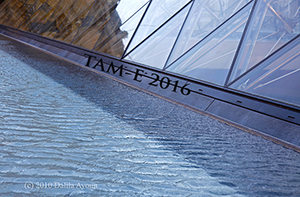In European Portuguese, the verbs of inherently directed motion (Levin, 1993) ir/vir (‘go'/‘come') show a complex pattern of combination with Goal PP's, namely with para (‘to') and até (a) (‘up to'). Typically, both prepositions can occur without apparent restrictions, although they exhibit somewhat different interpretations, since para requires a longer stay at the end of the path than até (cf. (1)).
(1) muita gente veio {para a/até à} rua
many people came to the street
However, ir/vir can, in some contexts, combine with para but not with até:
(i) the predication denotes a “non-physical” movement event and the PP denotes an entity, instead of a location:
(2) Carrillo vai {para o/*até ao} o Benfica
Carrillo goes to Benfica
(ii) the PP has a strict directional interpretation:
(3) Vai tudo {para o/ *#até ao} mesmo lado
everything goes to the same side
(iii) the verb occurs in the Progressive:
(4) Ele está a ir {para a/ ???até à} faculdade
He is going to the faculty
The contribution of these prepositions to the aspectual profile of predications (namely telicity) denoting events of movement poses some theoretical issues.
Examples from written corpora of on-line newspapers and EP native speaker's intuitions are the basis of the research. These and other data (e.g. combination with temporal adverbs) suggest that these kind of predications can be analyzed using the notion of path scale. Thus, we agree e.g. with Rappaport Hovav & Levin (2010) in that path scales associated to movement verbs are underspecified and we propose that prepositions para and até contribute differently to its specification: providing an ordering relation in the case of para and a maximal degree to the path scale in the case of até (Leal & Oliveira, 2015).
- Autre

 PDF version
PDF version

